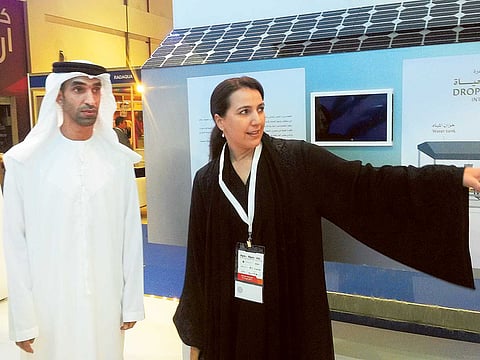Water levels in UAE dams reach record highs
Heavy rain last week replenishes UAE’s fresh water stocks

Dubai: Torrential rain in UAE on March 9 has replenished long-standing dams and reservoirs with a deluge of precious fresh water at a rate not seen in a quarter of a century.
Following a post-storm inspection of some of the country’s 145 dams this week as part of a national tour, Dr Thani Al Zeyoudi, Minister of Climate Change and Environment, told Gulf News that reservoirs have reached high watermarks not witnessed in decades.
In an exclusive interview, Al Zeyoudi said that the collection of vast amounts of rainwater will put the UAE in good stead as it will replenish underground aquifers, helping parched produce and animal producers in areas of the country who depend on vital groundwater for their livelihood.
Newly appointed Al Zeyoudi conducted the dam inspections as part of a comprehensive countrywide tour of environmental facilities and the agricultural sector.
Al Zeyoudi also toured the three-day AgraME conference in Dubai which ended on Tuesday.
“We just did dam visits and we had more than 40 dams around the UAE which got filled from the last rain date. Out of 145 dams, more than 40 were almost full. Some of the dams have not been filled for 20 to 25 years,” Al Zeyoudi said. “We are so happy to see such dams get filled after a very long period.”
Al Zeyoudi said measurement efforts by ministry staff put the rainwater stores in the millions of cubic metres.
The new water reserves are important given numerous studies in recent years that warned that freshwater aquifers in the UAE are under significant stress from human activity.
It’s estimated that water from reservoirs topped up in the last major weather event will boost water levels in underground aquifers by six to seven per cent.
“The total quantity of water that has been gathered or trapped by dams has reached around 30 million cubic metres which is a huge quantity to recharge the underground water reserves,” Al Zeyoudi said.
The average UAE resident uses about 350 litres of water per day.
“The water was collected by all 145 dams within the country. The dam’s job is to help recharge underground water and also maintain and control flooding within the wadis.”
The minister lauded untiring efforts by government staff round the clock to ensure that flood control measures were in full effect and were monitored during the onslaught of a major storm system that moved into the UAE from the west.
“We’re really glad the team was working almost 24 hours during the rain period to ensure the safety and security of dams and that there were no issues for the surrounding communities. I’m really proud of the team,” he said.
With the threat of serious flooding now passed, the agricultural sector can enjoy a badly needed injection of new freshwater reserves into groundwater aquifers, he said, from which farms draw water to irrigate crops, he said.
“Most of the farms depend on underground water. In terms of dams, some of the water will be evaporated and some will go to wadis that can be directed to farms,” he said.
Al Zeyoudi also met farming community members on Tuesday to hear first-hand challenges facing growers who provide up to 15 per cent of the nation’s farm-fresh foods.
The minister was also scheduled to visit on Tuesday the ministry’s Agriculture Innovation Centre where he will be briefed on its recent projects, achievements and experiences in the move to develop the agriculture industry.
By the numbers
- 30 million cubic metres collected from major rainstorm
- 145 dams across the UAE collected rainwater
- 40 dams were filled with precipitation
SOURCE: Ministry of Climate Change and Environment
Sign up for the Daily Briefing
Get the latest news and updates straight to your inbox


